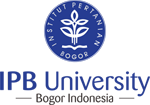STUDI POTENSI LANSKAP BERSEJARAH UNTUK PENGEMBANGAN WISATA SEJARAH DI KOTA BENGKULU
Abstract
The objectives of this study were to invent and identify the exsistance of historic landscape in Bengkulu City, to analise and describehistoric landscape which is potential to develop and conserve and also to give some approachments of conservation
and empowerment of historic landscape in Bengkulu City for historic tourism development. The method of the study was the surveymethod, including literature review, site observation, questionaire and interview for collecting data. The data
were analised to describe the existence and the condition of historic landscapes, and to offer an alternative of historical tourism development.
The result showed that Bengkulu City has long periodof history, which left historic landscape and cultural herritage as the physical evidences. The history started from kingdom period with high community welfare and invited the colonialism to
Bengkulu. The City still has nationally important role in the early of the independence period of Indonesian Republic. In this study, 18 cultural reserve and historic landscapes were observed, which spread in two subdistricts : Teluk Segara
and Gading Cempaka Subdistricts.
Each of cultural herritages and historic landscapesin Bengkulu City has different condition, so it required different treatment which includes : preservation, conservation, rehabilitation and reconstruction. Some objects are potential to be developed as historical tourism objects because of their uniqness and high historical value, i.e: Fort Marlborough, Old Harbour, Tapak paderi, Fatmawati house and Museum of Bengkulu. The potency of tourism sector also supported by the beautiful
scenery and community which are cooperative and friendly.
It is proposed that historical tourism objects in Bengkulu Province has devided in four clusters based on development potentiallity level and location of the objects. Cluster I as the maine development area, then followed by cluster II, III, and IV . Each cluster has main tourism object and supported by tourism facilities.
Downloads
This journal permits and encourages authors to post items submitted to the journal on personal websites or institutional repositories both prior to and after publication, while providing bibliographic details that credit, if applicable, its publication in this journal. However, after the article is submitted and published in this journal, it is fully copyrighted by the Jurnal Lanskap Indonesia or JLI. If excerpts from other copyrighted works are included, the author must obtain written permission from the copyright owner and give credit to the source in the article. Then, the writer or reader is allowed to copy, share, and redistribute articles/material in any form. But it must still include the appropriate source and credit because the article in this journal is licensed by Creative Commons Attribution 4.0 International License (CC BY 4.0).
I. Proposed Policy for Journals That Offer Open Access
Authors who publish with this journal agree to the following terms:
- Authors retain copyright and grant the journal right of first publication with the work simultaneously licensed under a Creative Commons Attribution License that allows others to share the work with an acknowledgement of the work's authorship and initial publication in this journal.
- Authors are able to enter into separate, additional contractual arrangements for the non-exclusive distribution of the journal's published version of the work (e.g., post it to an institutional repository or publish it in a book), with an acknowledgement of its initial publication in this journal.
- Authors are permitted and encouraged to post their work online (e.g., in institutional repositories or on their website) prior to and during the submission process, as it can lead to productive exchanges, as well as earlier and greater citation of published work (See The Effect of Open Access).
II. Proposed Policy for Journals That Offer Delayed Open Access
Authors who publish with this journal agree to the following terms:
- Authors retain copyright and grant the journal right of first publication, with the work after publication simultaneously licensed under a Creative Commons Attribution License that allows others to share the work with an acknowledgement of the work's authorship and initial publication in this journal.
- Authors are able to enter into separate, additional contractual arrangements for the non-exclusive distribution of the journal's published version of the work (e.g., post it to an institutional repository or publish it in a book), with an acknowledgement of its initial publication in this journal.
- Authors are permitted and encouraged to post their work online (e.g., in institutional repositories or on their website) prior to and during the submission process, as it can lead to productive exchanges, as well as earlier and greater citation of published work (See The Effect of Open Access).



























